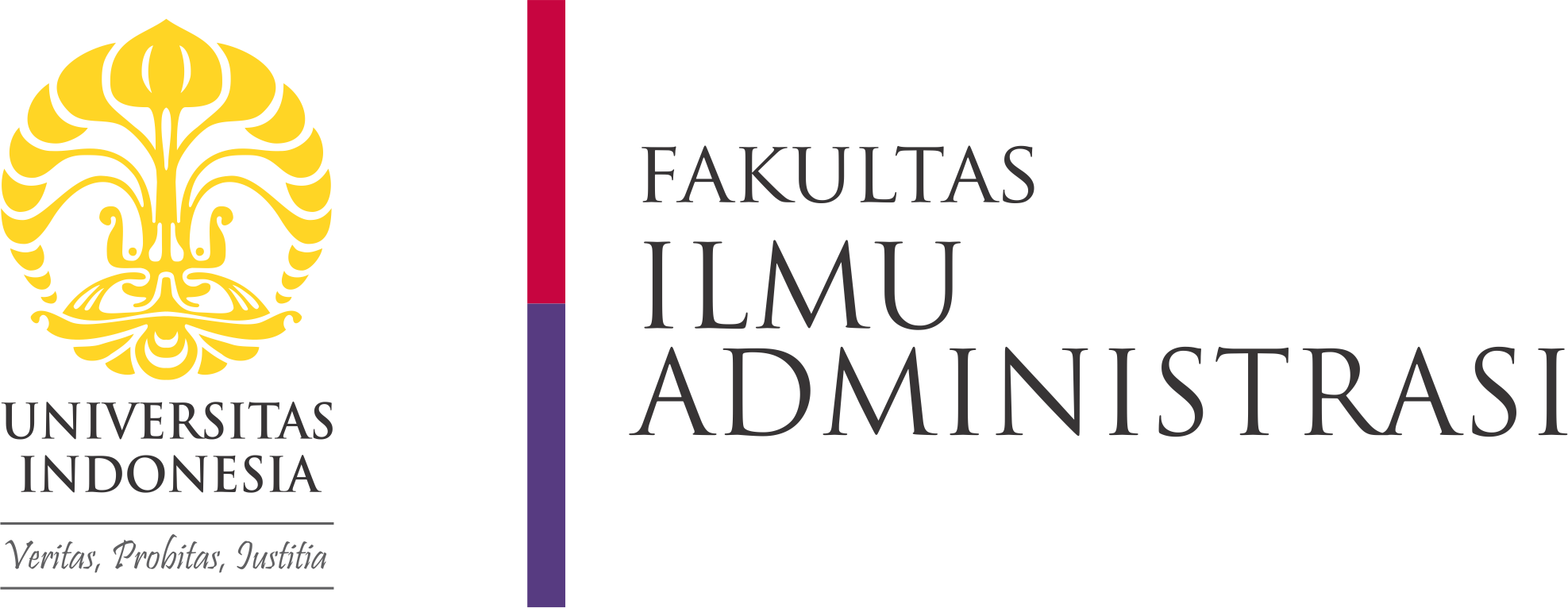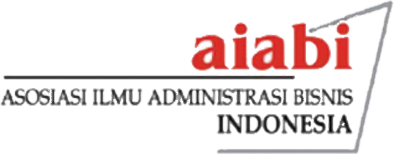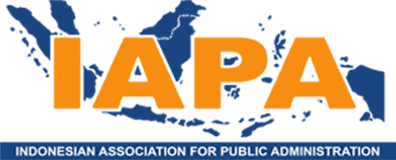Creative Commons License

This work is licensed under a Creative Commons Attribution-Share Alike 4.0 International License.
Abstract
In 2011, government institutions began utilizing HCMIS to reduce the manual workload of traditional administrative processes. The adoption of HCMIS in Tanzania is expected to increase efficiency by optimizing data accuracy, reducing costs, and eliminating paperwork. However, payroll losses continue to persist in the public sector. In 2018, the government incurred losses of Tanzania shillings (Tshs) 19.6 billion to 12,697 ghost workers. This study examines the challenges hindering the application of HCMIS in supporting selected human resource management (HRM) functions at the Nelson Mandela African Institution of Science and Technology (NM-AIST). This study applied Institutional Theory and Socio-Technical Theory as its analytical framework, gathering primary data through interviews with 16 respondents and reviewing reports for secondary data. Content analysis was employed for both primary and secondary data. The findings indicate several barriers to the effective utilization of HCMIS for HRM functions at NM-AIST, including inadequate Information and communications technology (ICT) expertise among system users, power interruptions, instability of internet connectivity, insufficient integration with other government systems, limited support for certain HRM functions, unsatisfactory employee self-service, financial constraints, and lack of top management support. To address these issues, the study recommends frequent training for HCMIS users as well as the allocation and timely disbursement of adequate budget for HCMIS to improve all HRM functions in public higher learning institutions in Tanzania.
References
Abbas, R. & Michael, K. (2023). Socio-Technical Theory: A review. In S. Papagiannidis (Ed), Theory Hub Book. Available at: http://open.ncl.ac.uk / ISBN: 9781739604400
Abreo, C., Bustillo, R., & Rodriguez, C. (2021). The role of institutional quality in the international trade of a Latin American country: evidence from Colombian export performance. Journal of Economic Structures, 10(1). https://doi.org/10.1186/s40008-021-00253-5
Akoyo, S.I. & Muathe, S.M.A. (2017). Towards a Theoretical Model for Human Resource Management Information Systems, Government Policy and Organizational Performance: A Research Agenda. IOSR Journal of Business and Management (IOSR-JBM), 19(1), 43-53
Ashaye, O. R. & Irani, Z. (2014). E-Government Implementation Benefits, Barriers and Risks: Evidence from Nigeria. US-China Education Review, 4(1), 13-25
Berg, M., & Aarts, J. (2017). From socio-technical systems to socio-technical ecosystems: Insights from ecology and social theory for designing and implementing information and communication technologies. In H. Nissenbaum & L. Floridi (Eds.), The Routledge Handbook of Philosophy of Information, 456-468. Routledge.
Berthod, O. (2020). Global Encyclopedia of Public Administration, Public Policy, and Governance. Springer. https://doi.org/10.1007/978-3-319-31816-5
Bwaki K. A. & Tefurukwa. (2021). Efficiency and Effectiveness of Human Capital Management Information System in Managing Ghost Workers Fraud: A Case of President’s Office, Public Service Management and Good Governance (PO-PSMGG)-Tanzania. (Unpublished Dissertation). Mzumbe University. Accessed September 2023 from: https://independent.academia.edu/kassimbwaki
Bondarouk, T. V. & Ruël, H. J. M. (2009). Electronic Human Resource Management: challenges in the digital era. The International Journal of Human Resource Management, 20(3) 505 — 514
Chabani, Z. (2020). The Challenges Facing Public Organisations to Implement Human Resources Information Systems: A Case Study of Algeria. Journal of Management Information and Decision Sciences, 23(4), 230–244.
Chama cha Mapinduzi. (2020). Ruling Party Election Manifesto 2020-2025. Dar es Salaam.CCM
Cheng, H. (2010). Seeking knowledge or gaining legitimacy? Role of social networks on new practice adoption by OEM suppliers. Journal of Business Research, 63(8), 824–831.
Chinyuka, A. M. (2018). Implementing Human Capital Management Information System (HCMIS) in Local Government Authorities in Tanzania: A case of Moshi District Council. (Unpublished Dissertation). Doctoral Dissertation, Mzumbe University.
Clegg, C. W. (2015). Socio-technical principles for public management reform. Public Management Review, 17(7), 965-986
Daniel J.P. (2015). The Influence of Human Resource Information System on Decision Making in LGAs: The Case of Lawson Version 9 in Kiteto District, Tanzania. (Unpublished Dissertation). Mzumbe University
Dehlinger, J., & Zellmer-Bruhn, M. (2012). Understanding the intersection of task complexity and team diversity: A socio-technical systems perspective. Human Resource Management Review, 22(4), 285-297.
DiMaggio, P. & Powell, W. (1983). The iron cage revisited: Institutional isomorphism and collective rationality in organisational fields. American Sociological Review, 48(2), 147-160
Farkas, Z. (2019). The concept and coverage of the institution. Rationality and Society, 31(1), 70–97. https://doi.org/10.1177/1043463118821654
Fukuyama, F. (2007). Development and the Limits of Institutional Design, in Natalia Dinello and Vladimir Popov, eds., Political Institutions and Development: Failed Expectations and Renewed Hopes (Cheltenham, UK: Edward Elgar) Government for the Year Ended 30 June 2018. Dodoma, National Audit Office.
Henderson, D., Sheetz, S.D. & Trinkle, B. (2012). The determinants of inter-organisational and internal in-house adoption of XBRL: a structural equation model. International Journal of Accounting Information Systems, 13(2), 109-140.
Ishijima, H., Mapunda, M., Mndeme, M., Sukums, F., & Mlay, V. S. (2015). Challenges and opportunities for effective adoption of HRH information systems in developing countries: National rollout of HRHIS and TIIS in Tanzania. Human Resources for Health, 13(1). https://doi.org/10.1186/s12960-015-0043-1
Joseph, S and Olugbora, O. (2017). Evaluation of Municipal E-Government Readiness Using Structural Equation Modelling Technique. The Journal for Transdisciplinary Africa, 14(1), 1-17.
Kauppi, K. (2013). Extending the use of institutional theory in operations and supply management research – review and research proposals. International Journal of Operations & Production Management, 33(10) 1318–1345.
Kauppi, K., & Luzzini, K. (2022). Measuring institutional pressures in a supply chain context: scale development and testing. Supply Management: International Journal. 27 (7), 79-107
Kavanagh, M. J, Gueutal, H.G. &Tannenbaum, S.1. (1990). Human resource information systems: Development and application. PWS-Kent Publishing Co.
Kavanagh, M. J., & Thite, M. (2007). Introduction to HRM & HRIS. John Wiley.
Kujala, S., & Turkulainen, V. (2011). Socio-technical systems design as a challenge for user-centered design. Journal of Usability Studies, 6(3), 132-147.
Kumar, A., & Sharma, M. K. (2018). A socio-technical approach to implementing human capital management information system: a case study of a public sector organisation in India. Journal of Enterprise Information Management, 31(2), 224–245.
Li, L., Ma, Z. & Cao, T. (2020). Leveraging social media data to study the community resilience of New York City to 2019 power outage. International Journal of Disaster Risk Reduction, 51(1), 1-13.
Liu, H., Ke, W., Wei, K., Gu, J. & Chen, H. (2010). The Role of institutional pressures and Organisational culture in the firm's Intention to adopt Internet-enabled supply chain management systems. Journal of Operations Management, 28 (5), 372-384.
Liu, L., & Kim, S. (2018). Socio-technical factors and adopting human capital management information systems: Evidence from Chinese firms. Journal of Business Research, 86, 309-318.
March, J. G. & Olsen, J. P. (1989). Rediscovering institutions. Free Press.
Matimbwa, H. & Masue, O. S. (2019). Usage and Challenges of Human Resources Information Systems in the Tanzanian Public Organizations. Journal of Human Resource Management. 7(4) 131-137. doi: 10.11648/j.jhrm.20190704.17
Mgonja, B. E. & Tundui,C. (2012). Institutional Impacts of the Local Government Reform Program on Good Local Governance in Tanzania. International Journal of Academic Research in Business and Social Sciences 2(5): 206.
Njau, P. (2017). A Challenge in Using Human Capital Management Information Systems (HCMIS) In Local Government Authorities. A Case of Mwanza City Council, Tanzania. (Unpublished Dissertation) Mzumbe University.
Nyaledzigbor, G. (2015). Payroll Fraud: Effects of Ghost Names on the Government Wage Bill in Ghana. Walden University. PhD Dissertation
Omar, H & Kiwango, T. (2021). Challenges Confronting Implementation of Electronic Human Resource Information System in Public Institutions in Zanzibar. Accountancy and Business Review, 2(2) 51-63
Orlikowski, W. J., & Scott, S. V. (2008). Sociomateriality: Challenging the separation of technology, work and organisation. The Academy of Management Annals, 2(1), 433–474. https://doi.org/10.1080/19416520802211644 Petracca,
E. & Gallagher, S. (2020). Economic Cognitive Institutions. Journal of Institutional Economics 16, 747–765 doi:10.1017/S1744137420000144
Ramirez-Madrid,P.J, Escobar-Sierra., Lans-Vargas. M.I. & Hincapie,M.M.J. (2022). Factors influencing citizens' adoption of e-government: an empirical validation in a Developing Latin American Country. Public Management Review, 26(1) DOI: 10.1080/14719037.2022.2078500
Richard-Carpenter, C. (1997). Systems Overload: People Management. Emerald Group Publishing
Rietsema, D. (2019). How to Properly Maintain Your HRIS: HRIS Payroll Software. Access on https://www.hrispayrollsoftware.com/maintaining-your-hris/.
Robertson, M., & Scarbrough, H. (2015). The adoption and implementation of complex socio-technical innovations in healthcare: The case of electronic patient records. Social Science & Medicine, 131, 210-217
Scott, W. R. (2008). Approaching adulthood: The maturing of institutional theory. Theory and Society, 37(5), 427–442.
Scott, W. R. (2013). Institutions and organisations: Ideas, interests, and identities, 4th ed. SAGE Publications.
Siddiqi,A. & Collins.D.R. (2017). Sociotechnical Systems and Sustainability: Current and Future Perspectives for Inclusive Development. DOI: 10.1016/j.cosust.2017.01.006
Shuai, M., Chengzhi, W., Shiwen, Y., Hao, G., Jufang, Y. and Hui, H. (2018). Review on Economic Loss Assessment of Power Outages. Procedia Computer Science, 130, 1158-1163.
Tefurukwa, W.O. (2023). The Central Admission Systems: The Best E-government Tool?. Journal of Policy and Leadership, 9(2), 37-54
Tefurukwa,W.O. (2019). Online management of student admissions and loans in higher education institutions in Tanzania. (Unpublished Dissertation) University of Dar es Salaam
Tefurukwa. O. W., (2022). Managing Ghost Workers Fraud on Payroll in Tanzania: A Conceptual Framework. International Journal of Governance and Public Policy Analysis, 3(01), 75–103. https://doi.org/10.31357/ijgppa.v3i01.5571
The United Nations (UN). (2020). E-Government Survey 2020. New York;https://publicadministration.un.org/en/
The United Nations (UN). (2022). E-Government Survey 2022. New York;https://publicadministration.un.org/en/
The United Republic of Tanzania (URT). (2014). Human Capital Management Information System Security Guiding Principles, Dar es Salaam: President’s Office Public Service Management and Good Governance.
The United Republic of Tanzania (URT). (2016). National Information and Communication Technologies Policy, Dar es Salaam: Ministry of Communications and Transport.
The United Republic of Tanzania (URT). (2016). National Information and Communications Technology Policy. Ministry of Works, Transport and Communication. Government Printer, Dar es Salaam.
The United Republic of Tanzania (URT). (2018). Government Journal. Dodoma: President’s Office Public Service Management and Good Governance.
The United Republic of Tanzania (URT). (2020). Human Capital Management Information System (HCMIS) User Manual. Dar es Salaam, Government Printer.
The United Republic of Tanzania (URT). (2021). Annual General Report of the Controller and Auditor General on the Audit of Public Authorities and Other Bodies for the Financial Year 2019/2020. Dodoma, National Audit Office.
The United Republic of Tanzania (URT). (2021). e-Government authority strategic plan. 1–27. Dar es Salaam. PO PSMGG
The United Republic of Tanzania (URT). (2023). Annual Report of the Controller and Auditor General on the Audit of the Central Government for the Financial Year ended 30 June 2022. Dodoma, National Audit Office.
Weerakkody, V., Janssen, M., & Hjort-Madsen, K. (2007). Realising integrated E-Government services: A European perspective. Journal of Cases in Electronic Commerce, 3(2), 14-38. Idea Group, ISSN 1548-0623.
Troshani, I, Jerram, C., & Hill, S. R. (2011). Exploring the Public Sector Adoption of HRIS. Industrial Management & Data Systems, 111(3), 470- 488.
Withal, U. (2020). Practices, provision and protest: power outages in rural Norwegian households. Energy Research and Social Science, 62, pp. 1–30.
Yanusa, A. I. (2013). Assessment of Financial Performance of Ankpa Local Government. International Journal of social science and human review, 4(1)
Yasin, R., & Jan, G. (2022). Power Outage and Proactive Service Performance: The Role of Patient Incivility and Job Stress. International Journal of Productivity and Performance Management, 71(7), 2680–2703. https://doi.org/10.1108/IJPPM-08-2020-0456
Interview Transcript
First Page
171
Last Page
182
Recommended Citation
Marcel, Nicodemus S. and Tefurukwa, Oscar W.
(2023)
"Human Capital Management Information System at the Nelson Mandela African Institution of Science and Technology of Tanzania: Challenges Encountered,"
BISNIS & BIROKRASI: Jurnal Ilmu Administrasi dan Organisasi: Vol. 30:
No.
3, Article 5.
DOI: 10.20476/jbb.v30i3.1477
Available at:
https://scholarhub.ui.ac.id/jbb/vol30/iss3/5






